| Revista Umělec 2004/3 >> It’s a War Out There | Lista de todas las ediciones | ||||||||||||
|
|||||||||||||
It’s a War Out ThereRevista Umělec 2004/301.03.2004 Tony Ozuna | blasphemy | en cs |
|||||||||||||
|
As usual, American Independence Day (4th of July), 2004, in Berlin was abound in protests against the U.S.A., but the “Girl-Groups Against Bush” concert at the Mudd Club in East Berlin was the most appealing to me. Bringing together German-Berliners like Electrocute and Berlin-based New Yorkers like Isabella Deluxe 3000—with ten groups overall--the line-up was sweet; though, the real attraction for me was the Jenny Holzer Experience—billed as “Rock mit Schlagworten der “Vorsitzenden” Jenny Holzer.” (Rock with slogans by "Chair-person" Jenny Holzer.)
The Mudd Club in Berlin is an outpost of the New York indie-punk club, which is famous (like all clubs and eateries in NYC) just for being in NY. Upstairs in the courtyard, there was a 4th of July BBQ with free hamburgers (no hot dogs---just grilled burgers with ketchup, no mustard), and a stage for improv protest singers; downstairs in the cellar, were the bands. Mike Kelly was there, too, up front or so I thought at first. Roughly from the same generation as Mike Kelly, Jenny Holzer is in her fifties now, and I thought it would be fantastic to see her do a gig in Berlin—a real step into a new form. Mike Kelly periodically tours with performance artist/singer, Ann Magnuson and her band, Bongwater, and Kelly’s own punk/performance art band, Destroy All Monsters, still plays on rare occasions. So, why not Jenny Holzer? Holzer is famous for postering NYC in the late 1970s with her aphorisms and maxims (she calls them truisms). Statements like, “Enjoy yourself because you can’t change anything anyway,” “Government is a burden on the people,” or “Grass roots agitation is the only hope.” Often contradictory with her truisms, Holzer’s point is to get people thinking—period. Her truisms have been put onto stickers and pasted on baggage at airports, printed on t-shirts, and set on metal plaques fixed to public utilities or in public spaces. Putting her messages into LED (light-emitting diode) signs on highways, and on Times Square has been her most successful attempt to reach the average Joe or Jose. Unfortunately, it turned out that it wasn’t actually Jenny Holzer performing at the Mudd Club in Berlin. The Jenny Holzer Experience turned out to be an all-guy German band, sounding and looking a lot like Magazine or the Stranglers, late 70s, early 80s post punk, and singing Jenny Holzer’s truisms in English. I admit I was disappointed, because I thought I would get an interview with her—I was thinking of asking her why she thought that performing or singing her truisms as lyrics would be a better way of getting her message out to the people, especially since she does have a message, as sly and converse as Oscar Wilde’s. And some of her truisms are so appropriate for American Independence Day, 2004. “True freedom is frightful.” “Absolute submission can be a form of freedom.” “Freedom is a luxury not a necessity.” These are some of the most appropriate truisms that the Jenny Holzer Experience sang during their set. And slowly it seemed to me more appropriate that a band of Germans was singing these songs in East Berlin, than if Holzer herself were on stage. “There’s a fine line between information and propaganda,” says one of Holzer’s truisms and it’s hard not to think of American or all politics for that matter, after reading this one. Public statements from Bush’s camp, have been notoriously contradictory and vague. In fact, it’s been said that in Bush’s case, “The greatest clarity is a contradiction.” Jenny Holzer is not the originator of her truisms; she is not an author. She says that the contradictions in her truisms are a result of her methodology; they are like found objects (taken from books, old folk sayings, sometimes trite, but never platitudes). In contrast, Bush’s tendency to be contradictory is apparently based on the writings of the political philosopher Leo Stauss, a German-Jew (born 1899) who left Germany in 1932, anticipating the ugliness that was to come under Hitler’s Nazism. Strauss lived and studied in Germany at a time when it was lethal for intellectuals and artists to speak out loud and clear. Thus, one of his most important books, Prosecution and the Art of Writing, is a guide to communicating as murkily and obtusely as possible—a kind of survivors guide for academics in mid-20th century Central Europe. In the US, Strauss first taught at the New School of Social Research in NY, then at the University of Chicago, in the 50s, in the same department as Hannah Arendt. Back then, he was an isolated though distinguished conservative in a department dominated by progressive left-wing thinkers, the renowned Committee on Social Thought. But he did have some exceptional students through the years who became his ardent followers, like disciples, and ultimately some ended up in the world of politics. Simply put, the Straussian concept is that in the world of politics, contradictions are not lies—they are conscious unreason, or nonsense. They can make sense only to those who understand the concept, and they are a necessity to rulers (wiser men) with higher aims. Today, Leo Strauss, who died obscurely in 1973, is recognized as the most influential political philosopher in America, because his neo-conservative followers have been advising Bush since day one. Bush and his team have become masters of obtuse communication and contradiction. And so, in some ways you could blame all the Bush nonsense in the world today on Leo Strauss, and it makes perfect sense that Germans have taken up the torch so boldly against Bush. The Jenny Holzer Experience at the “Girl-bands Against Bush” concert in Berlin is just one instance of Germans reacting to a dour and frightening global situation they feel partly responsible for. On another front, one week later in Prague, Los Angeles-based guerrilla poster artist Robbie Conal was on tour with his new book “Artburn,” which reprints some of his best work from his monthly full-page space in the LA Weekly. He also presented a short film, Robbie Conal’s Guerilla Etiquette & Postering Techniques, which explains how to illegally poster streets in American cities. The film included tips on avoiding police (work in pairs), and dealing with police if caught; for instance, to avoid a fine or arrest, just explain that it’s an art project. As well, Conal premiered a new series of election posters intended for the streets of New York during the Republican National Convention there, from August 29-September 4, 2004. Conal’s work is impossible to ignore when you come across it. Overnight, hundreds of bold, colorful posters will go up with the assistance of his “sniping” crews, art students and other volunteers he recruits before hitting a city. His graphic protests are daring and topical—raw images of politicians or other media personalities such as Bill Clinton, Michael Eisner [Disney CEO], Bill Gates, or George W. Bush and Dick Cheney, are Conal’s most frequent targets now. The images are accompanied by a few words of humorous, satirical text, For instance, his first poster of Bush immediately after the farcical U.S. election in 2000, read, “Hail to the Thief.” Ronald Reagan and the first Bush were Conal’s initial targets, when he first started these art attacks in the mid 80s. Conal’s work is very punk rock. This can be a bit surprising since he is a university professor (at the University of Southern California, School of Fine Arts), in his late fifties, and as he himself says, “majored in psychedelic drugs in college [he studied painting at San Francisco State University] during the late 1960s.” Conal says his work is, “Just one way of turning anger, disappointment, sometimes utter disbelief at the unconscionable doings of our political and cultural leaders into a form of silly-satirically joyful-resistance.” See www.robbie- conal.com for more. At his presentation, I asked Conal if he has ever considered internationalizing his work, meaning addressing broader, global issues or targeting leaders beyond the USA, then postering globally. He said that in Italy, he had been encouraged to do a poster of Berlusconi, and in England, he was urged to do likewise Blair. But Conal thinks that taking his work into this direction would be a type of “cultural imperialism.” He suggested that local artists should instead address their own leaders and issues and he was assured that every country had their own artist(s) doing the same type of satirical political art. Later, Conal informed me that in his opinion, Klaus Staeck is “the greatest living political photomontage poster artist.” Based in Heidelberg, Staeck has been doing bold political posters since the early 70s. Most of them sting German politicians, present and past, yet he also deals with Europe and its historical and current issues. Over the years, there have been humorous, critical posters of U.S. presidents, specifically Reagan with a missile for a head (1983), and George W. Bush, “Home of the Climate Killers,” 2001. However, in general, Staeck takes his aim at corporate culture, German politicians, and current debates in German and European Union social policy. While Staeck may indeed be “the greatest living photomontage artist,” as Conal claims, it should be said that Staeck has most significantly developed this technique, which was invented in 1916, by fellow Germans, John Heartfield and George Groz. It should not be surprising, that there is such a great tradition of political critique in German modern art, beginning with the Dadaists, especially Groz and Heartfield, who had witnessed the senselessness of the war, first hand, as soldiers. Other Germans artists, who continued to criticize politics up to the Third Reich, when most had to flee the country, include caricaturist, Otto Dix, photomontage artist, Hannah Hoch (the only female in the movement), Kurt Schwitters, and Dadaist turned surrealist Max Ernst. Most famous for his remorseless satirical cartoons of German politicians, George Groz said, “In those days (after the First World War) we were all Dadaists. If the word meant anything at all, it meant seething discontent, dissatisfaction and cynicism. Defeat and political ferment always give rise to that sort of movement.” In his 1955 Autobiography, Groz also says, “I thought the war would never end. And perhaps it never did, either.” Perhaps it never did. Now that’s a thought. On the one hand, the Bush clan has a situation that is unprecedented in history. That is what they tell us, anyway. We can’t deny that there are men in this world who are full of fury and hatred of the West, today. So what should a state do with threats like this? “We shall triumph over everything. And first of all we’ll destroy this civilization that is so dear to you, in which you are caught like fossils in shale. Western world, you are condemned to death…. Let the Orient, your terror, answer our voice at last! We shall waken everywhere the seeds of confusion and discomfort. We are the mind’s agitators. All barricades are valid, all shackles to your happiness damned…. Starve the people, so that they will at last know the taste of the bread of wrath!... Let distant America’s white buildings crumble among her ridiculous prohibitions. Rise, O world! See how dry the earth is, and ready, like so much straw, for every conflagration. Laugh your fill….” There was no muscular government reaction to these words when they were made in public, and the speaker was not exactly demonized. No governments sent tanks into neighborhoods to seek out and subdue this particular enemy of the state. But maybe that was just because he was an artist, and living in France. The terrorist threat to your lifestyle here is Louis Aragon, co-founder of the French surrealist movement, speaking at a lecture in Madrid, at a students’ residence on April 18, 1925. From the period after the First World War up to the beginnings of the Cold War, post World War II, the French surrealists, lead by Aragon and Andre Breton took creative political opposition in Europe to its greatest heights. And now these artists (their works) are in the greatest museums and collections in world, where they deserve to be. Yet, the war goes on…
01.03.2004
Artículos recomendados
|
|||||||||||||
|
04.02.2020 10:17
Letošní 50. ročník Art Basel přilákal celkem 93 000 návštěvníků a sběratelů z 80 zemí světa. 290 prémiových galerií představilo umělecká díla od počátku 20. století až po současnost. Hlavní sektor přehlídky, tradičně v prvním patře výstavního prostoru, představil 232 předních galerií z celého světa nabízející umění nejvyšší kvality. Veletrh ukázal vzestupný trend prodeje prostřednictvím galerií jak soukromým sbírkám, tak i institucím. Kromě hlavního veletrhu stály za návštěvu i ty přidružené: Volta, Liste a Photo Basel, k tomu doprovodné programy a výstavy v místních institucích, které kvalitou daleko přesahují hranice města tj. Kunsthalle Basel, Kunstmuseum, Tinguely muzeum nebo Fondation Beyeler.
|








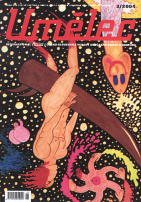








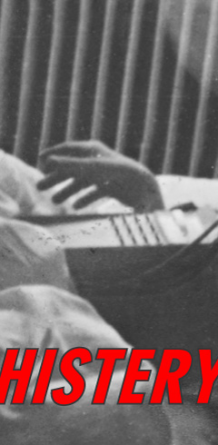






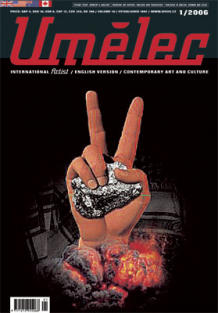




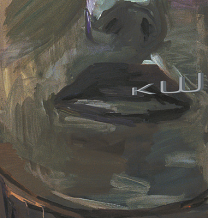
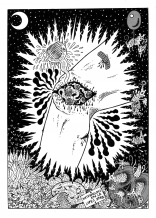
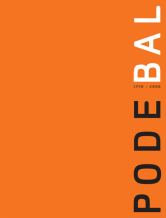
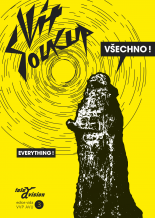


 We Are Rising National Gallery For You! Go to Kyjov by Krásná Lípa no.37.
We Are Rising National Gallery For You! Go to Kyjov by Krásná Lípa no.37.
Comentarios
Actualmente no hay comentariosAgregar nuevo comentario